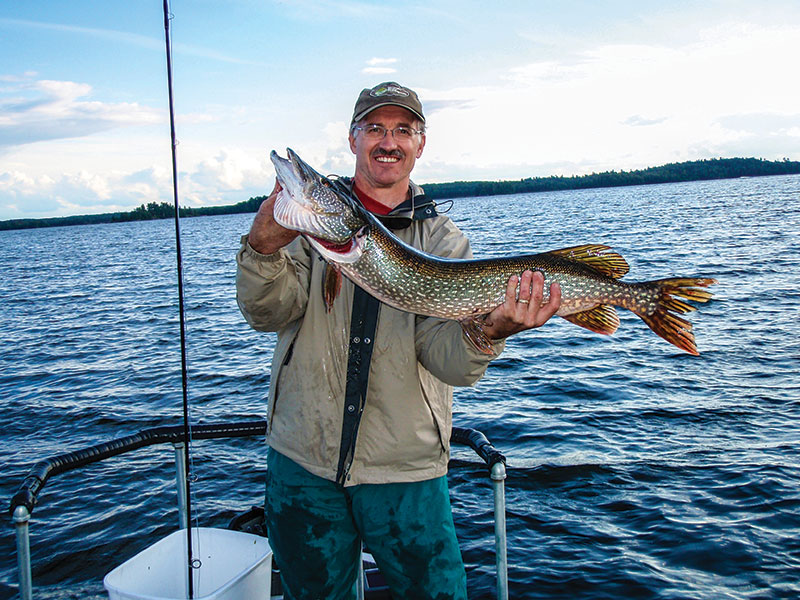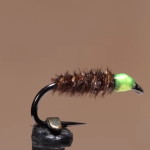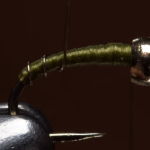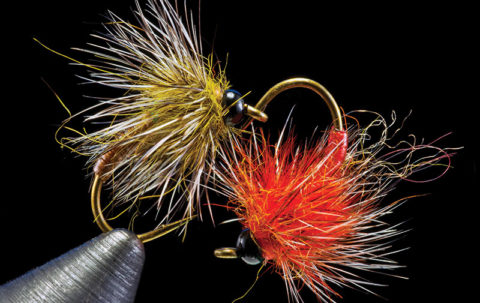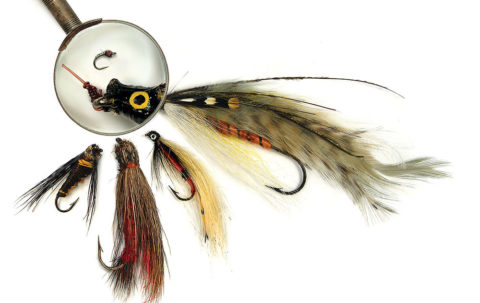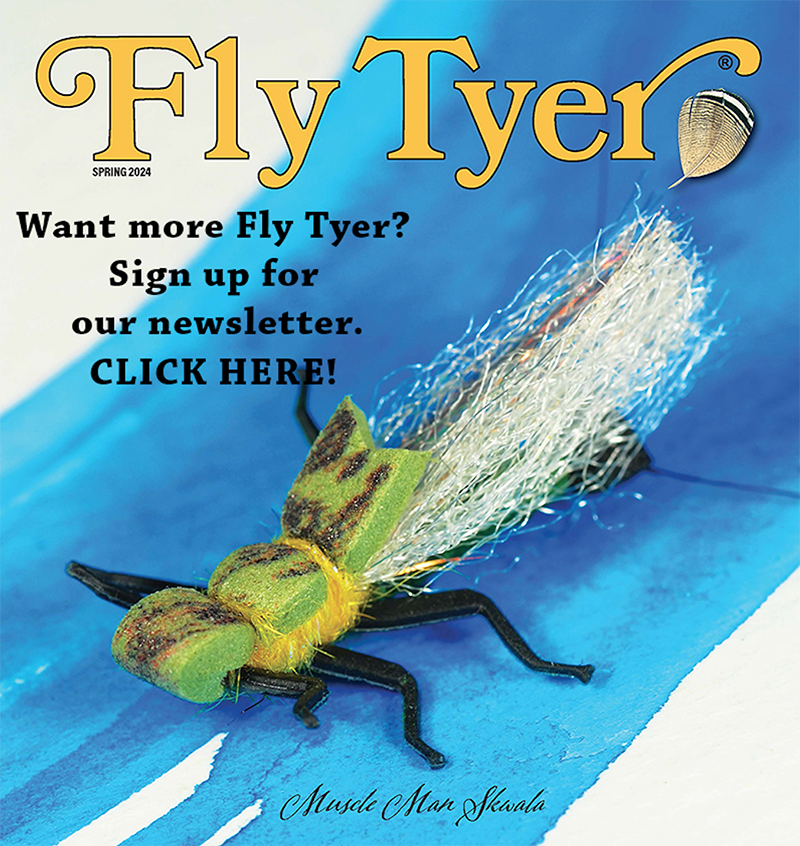Conventional-tackle spinnerbaits inspired this can’t-miss fly. It’s fun to make, and fun to fish!
by Craig Riendeau
ALTHOUGH I AM A WARMWATER FLY FISHERMAN, I pay a lot of attention to what’s going on in the world of conventional fishing tackle. With all their toys, those guys can sure catch fish. Sometimes they even manage to make me jealous, which keeps me working at my vise, looking for answers to their success by designing new flies. Swim-bait lures are a good example. These five-inch-long hunks of plastic move seductively with little manipulation from the angler, and they catch fish everywhere, especially in reservoirs and lakes where the main forage are pelagic baitfish such as shad, herrings, hitch, or smelts.
I wanted a fly that would resemble a multitude of bait species and basically swim on its own. Also, with the inherent nature of some of my favorite game fish to hang out in weeds and woody debris, the new pattern had to be weedless.
Rabbit hair has the best swimming motion of any fly tying material. A strip of fur easily imitates the long, tapered body of a fish. The problem with a rabbit strip is that it has a tendency to foul around the hook at the worst possible moment, such as when a big fish is following the fly for a closer inspection. A fouled fly never passes that test!
Solving Simple Problems
There are a couple of methods that prevent a rabbit strip from fouling. You can tie a loop of monofilament to the back of the hook under the strip. You might also poke a hole through the hide, slip a single strand of monofilament with a melted ball on the end through the hole, and then tie the strip and level end of the mono to the hook shank. The stiff monofilament prevents the strip from whipping around the hook and tangling. Finally, you can coat the first quarter of an inch of the hide with glue or silicone; the adhesive stiffens the strip and prevents it from fouling.
Next, I needed to add a good weed guard. Having chased bass my whole life, I know a thing or two about fishing in cover. I think that the traditional single-strand looped weed guard is mostly ineffective; it probably prevents fish hookups more than it prevents weed fouling. It will offer protection on either the right or left side of the fly, but if it is centered over the hook, it blocks the point. Even two loops of monofilament, a form of weed guard I used for a long time, work only slightly better; while they protect both sides of the fly, the twin loops are relatively soft and prone to collapsing if they strike a hard obstacle such as a log, especially when one is using a snappy retrieve.
It seemed that both issues relate to the tie-in point of the materials. To function properly, they should both be placed farther back from the hook bend. That’s when I had a wild hair: Not tying them directly to the hook might solve both problems. I could accomplish this arrangement using an extended body made from a small piece of fly tying tubing. I could attach the rabbit strip to the tubing, and then tie the tube to the hook. I could also attach the weed guard to the extended tube.
I still had one more problem to solve: Long rabbit strips, tied to a hook with the hair pointing up, have a tendency to roll over with the skin facing up. This causes the tail to twist and roll in the water. Once again, I solved both problems using one solution. I cut 1-millimeter-thick Razor Foam into the shape of a tail fin, and glued it to the tip of the rabbit strip. The buoyant foam prevents the strip from rolling over. And, if you cup the fin slightly, it acts like a keel so the fly stays upright and swims in a straight line. Also, if you let the fly sink to the bottom, it lands upright with the tail floating up; tied in darker colors, a size 2 Wild Hare passes as a crawdad, sculpin, or gobie.
I have caught just about every freshwater fish imaginable from Canada to Florida with the Wild Hare. I tie mine with weed guards because I usually fish in heavy cover. When fishing open water or chasing schooling fish, you may omit weed guards. With the use of a Riendeau Ringer and interchangeable weighting, you can easily adjust the weight of a fly for fishing different situations, but you can just as easily tie your choice of dumbbell to the hook. I use the Deep Sea Aluminum Eyes as a moderate weight, plus its big eyes give game fish a target. You can easily change the weight to something heavier if you want to fish deeper.
The Wild Hare is really a two-for-one pattern: not only does it catch the fisherman’s eye, but it catches fish, as well.
Craig Riendeau is a regular contributor to our magazine. His patterns are inventive, and they do catch fish! For more information about his patterns and guide services, go to his website: www.offthedeepedge.com. Craig lives in Georgia.
WILD HARE
Hook: Eagle Claw 413, size 2 or 1/0.
Thread: Monofilament thread.
Weight: 3/8-inch Deep Sea Aluminum Eyes with a Riendeau Ringer,
or your choice of dumbbell eyes tied directly to the hook.
Weed guard: 16-pound-test Mason hard monofilament
for size a size 2 fly, or 20-pound-test for size 1/0.
Body extension: Narrow plastic tubing and a spinnerbait skirt collar.
Body: Crosscut rabbit strip and UV Polar Chenille.
Tail: Standard Zonker strip for a size 2 fly or a magnum
Zonker strip for size 2/0, and Flashabou.
Tail fin: 1-millimeter-thick Razor Foam.
More stuff: A light-activated adhesive, Loctite Plastics Bonding
System, superglue, and tube-fly tying adapter for your vise.

